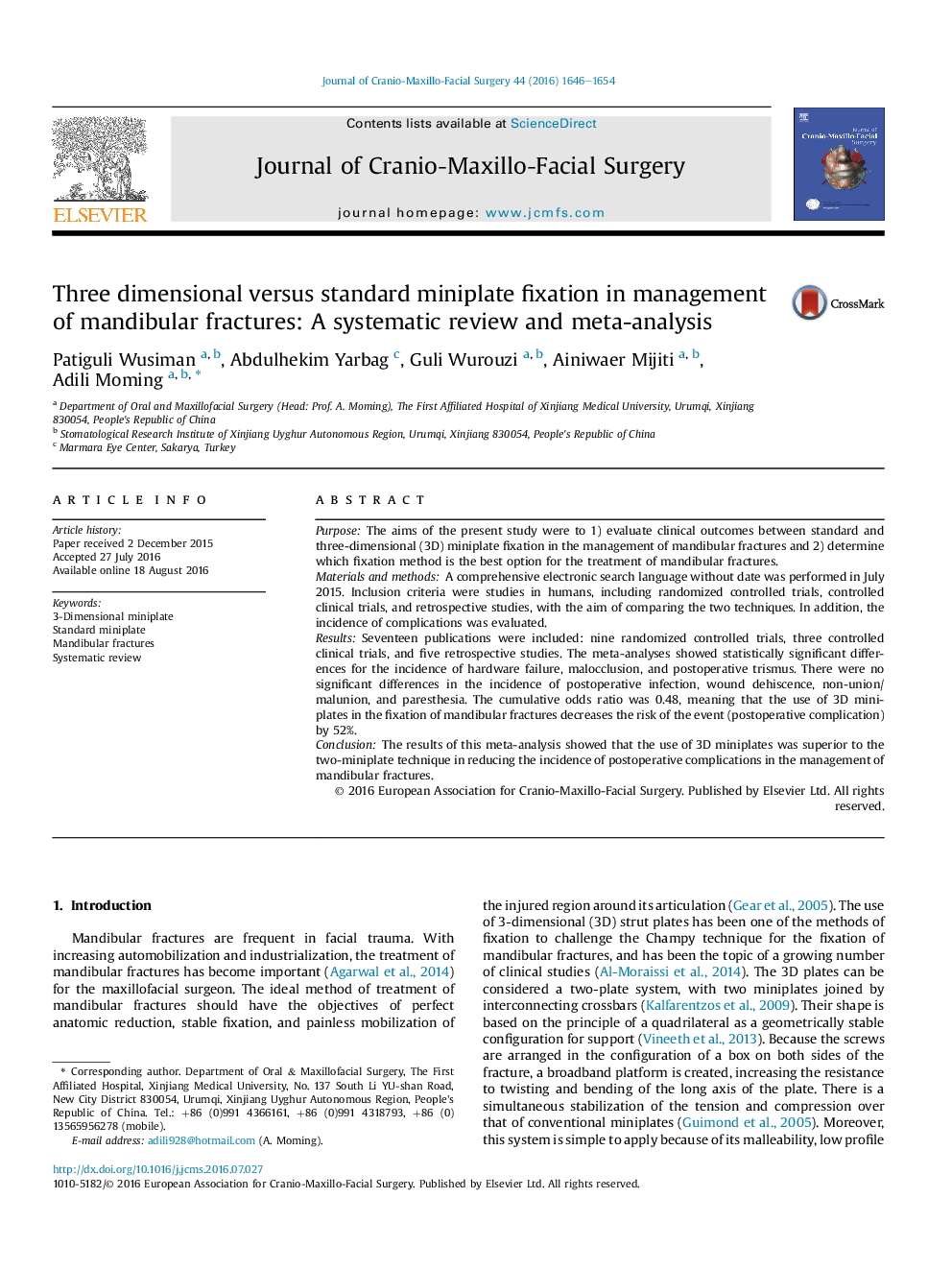| Article ID | Journal | Published Year | Pages | File Type |
|---|---|---|---|---|
| 5640246 | Journal of Cranio-Maxillofacial Surgery | 2016 | 9 Pages |
PurposeThe aims of the present study were to 1) evaluate clinical outcomes between standard and three-dimensional (3D) miniplate fixation in the management of mandibular fractures and 2) determine which fixation method is the best option for the treatment of mandibular fractures.Materials and methodsA comprehensive electronic search language without date was performed in July 2015. Inclusion criteria were studies in humans, including randomized controlled trials, controlled clinical trials, and retrospective studies, with the aim of comparing the two techniques. In addition, the incidence of complications was evaluated.ResultsSeventeen publications were included: nine randomized controlled trials, three controlled clinical trials, and five retrospective studies. The meta-analyses showed statistically significant differences for the incidence of hardware failure, malocclusion, and postoperative trismus. There were no significant differences in the incidence of postoperative infection, wound dehiscence, non-union/malunion, and paresthesia. The cumulative odds ratio was 0.48, meaning that the use of 3D miniplates in the fixation of mandibular fractures decreases the risk of the event (postoperative complication) by 52%.ConclusionThe results of this meta-analysis showed that the use of 3D miniplates was superior to the two-miniplate technique in reducing the incidence of postoperative complications in the management of mandibular fractures.
